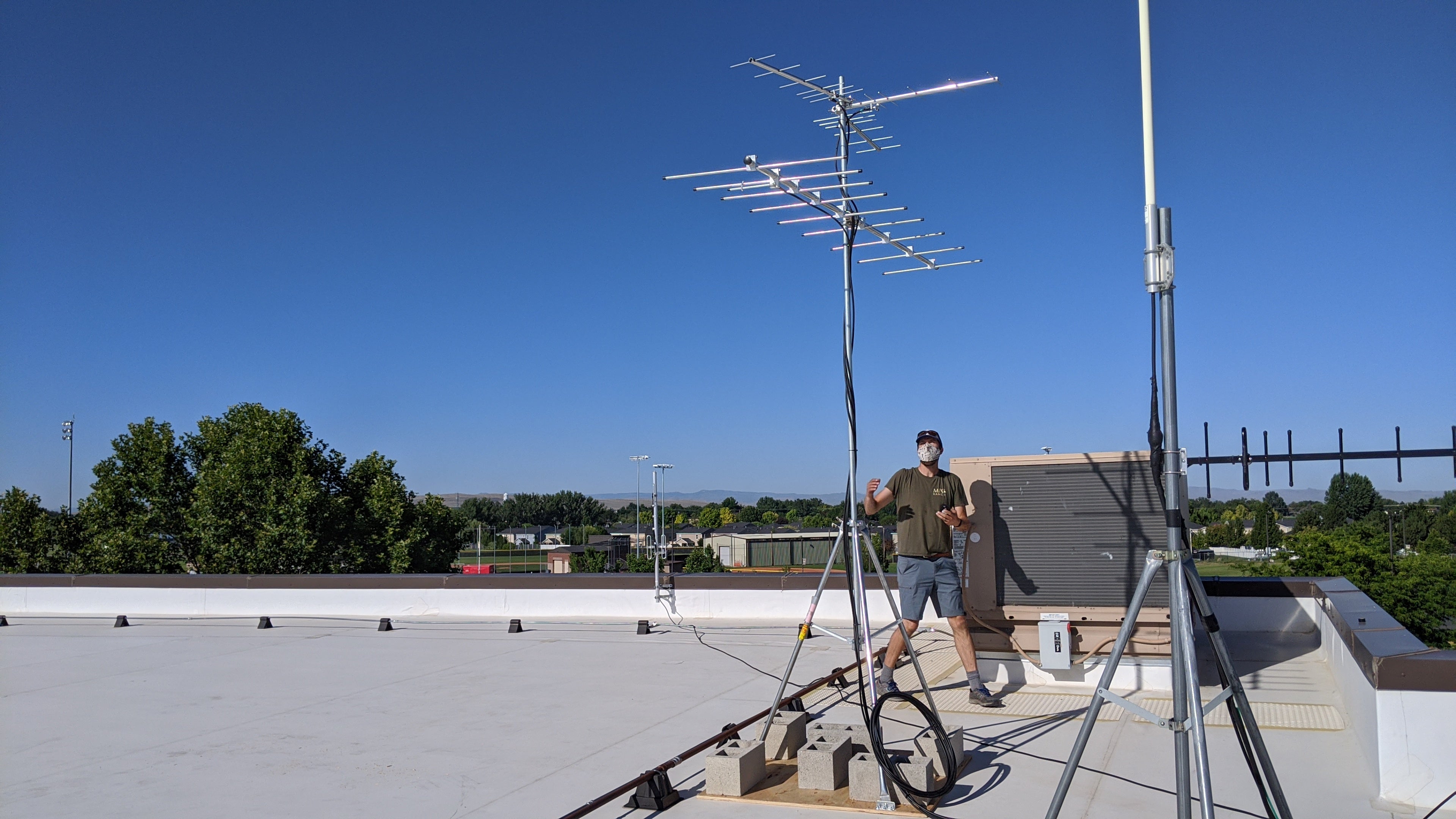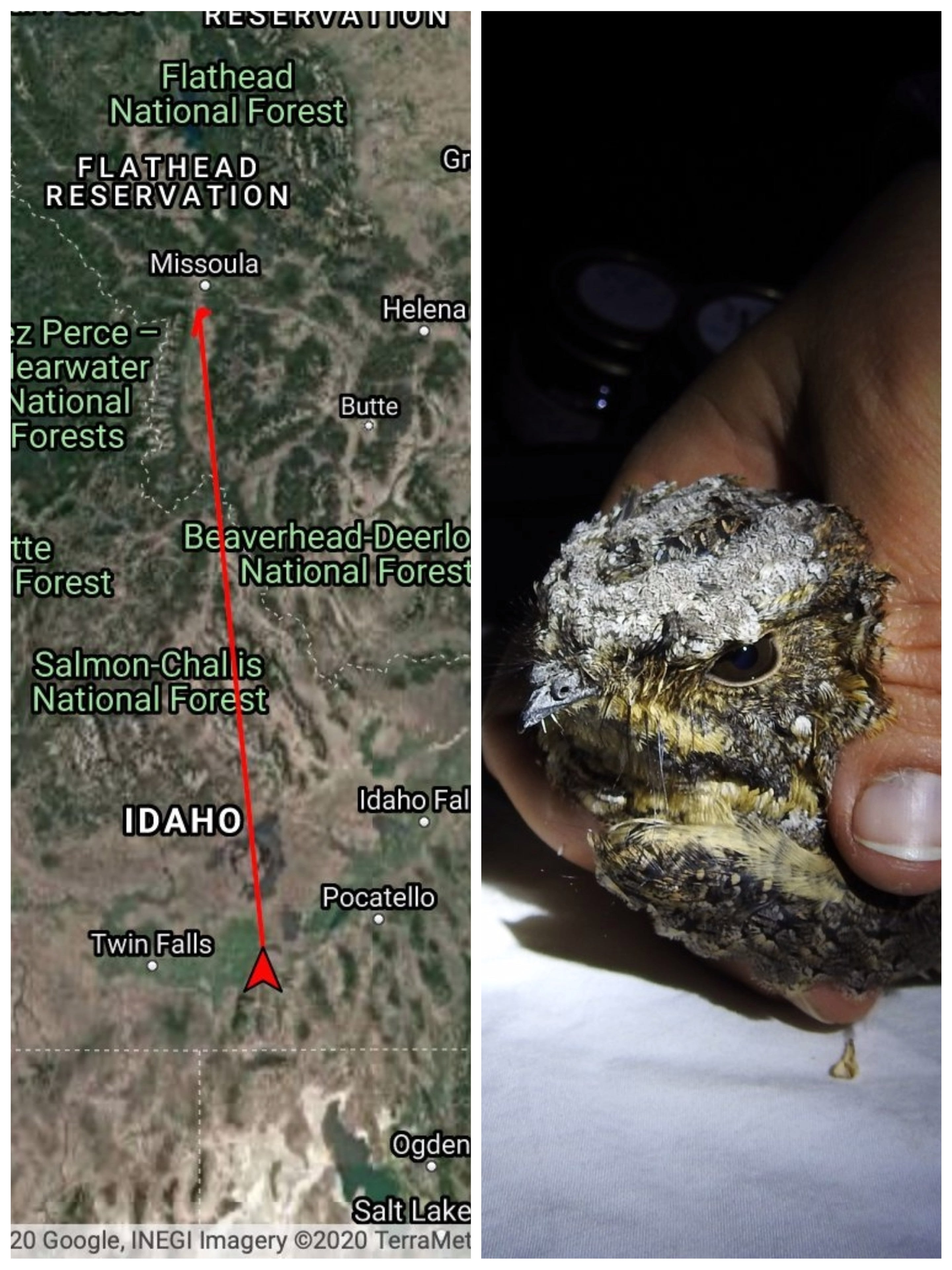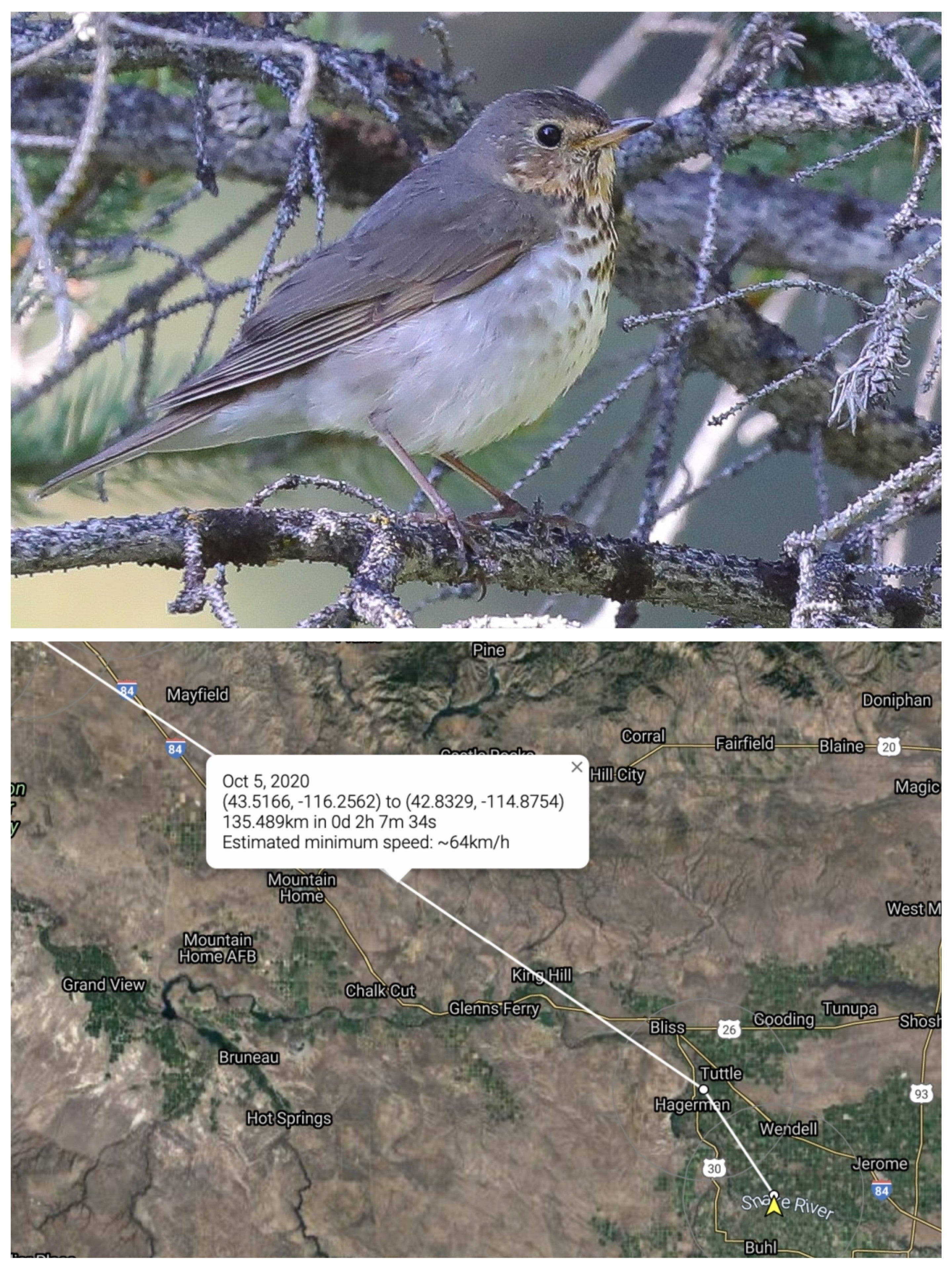By: Jeremy Halka
Tracking small wildlife over large distances can be challenging due to a variety of technical and monetary reasons. Birds Canada developed the Motus Wildlife Tracking System (Motus) to address these issues and increase the potential for studying smaller species. Motus is a collaborative, global network of researchers that use automated radio-telemetry to track thousands of birds, bats, and insects. The system utilizes shared radio-telemetry receivers (stations) which detect relatively cheap and easy-to-deploy nanotags that researchers place on individuals of any particular species they want to study.
Motus towers typically have up to a 15 mile detection range and their data is uploaded to the Motus database where it is accessible to all researchers, as well as the public.

Two years ago, MPG Ranch, based in the Bitterroot Valley, MT, and collaborators created the Intermountain West Collaborative (IWC) Motus project to expand the network in our region. Last year, MPG Ranch reached out to IBO to help install Motus stations throughout the Snake River Plain in Idaho as part of the IWC. Since then, we have partnered with a number of Idaho Department of Fish and Game Wildlife Management Areas (WMAs) and U.S. Fish and Wildlife National Wildlife Refuges (NWRs), as well as The Peregrine Fund to install stations on their land. To date, we have installed 10 Motus stations in southern Idaho including one on top of Lucky Peak. IBO and MPG Ranch plan to install more stations in 2021, with an overall goal of creating a web that would capture a sizable chunk of all wildlife sporting Motus nanotags that pass through Idaho on migration.

Though the bulk of our installations happened over the course of the summer and fall of this year, we have already collected a few interesting detections from a handful of stations. At Minidoka NWR (near Burley), we detected a Common Poorwill about 8 days after it was banded by MPG Ranch in MT. Our Motus station at Sterling WMA (near American Falls), detected another MPG-banded bird, a Northern Saw-Whet Owl, 13 days after it was tagged in October.
Perhaps the most interesting set of detections we’ve received this year was for a Swainson’s Thrush that was banded north of Vancouver, BC.

The bird was first detected at the Peregrine Fund’s World Center for Birds of Prey in Boise, then detected again shortly after at the Billingsley Creek WMA near Hagerman, and then detected a third time by our station at the Niagara Springs WMA near Buhl (all in the same day). By having clusters or lines of stations like this, we are able to fine-tune approximations of wildlife itineraries and speeds of movement. In this case, we estimated a minimum speed of 64 kilometers per hour!
To learn more about Motus, visit motus.org and be sure to follow MPG Wildlife on Facebook and @mpg_ranch on Instagram.
This article is part of our 2020 end of the year newsletter! View the full newsletter here, or click “older posts” to read the next article.
Make sure you don’t miss out! Sign up to get our annual email update.